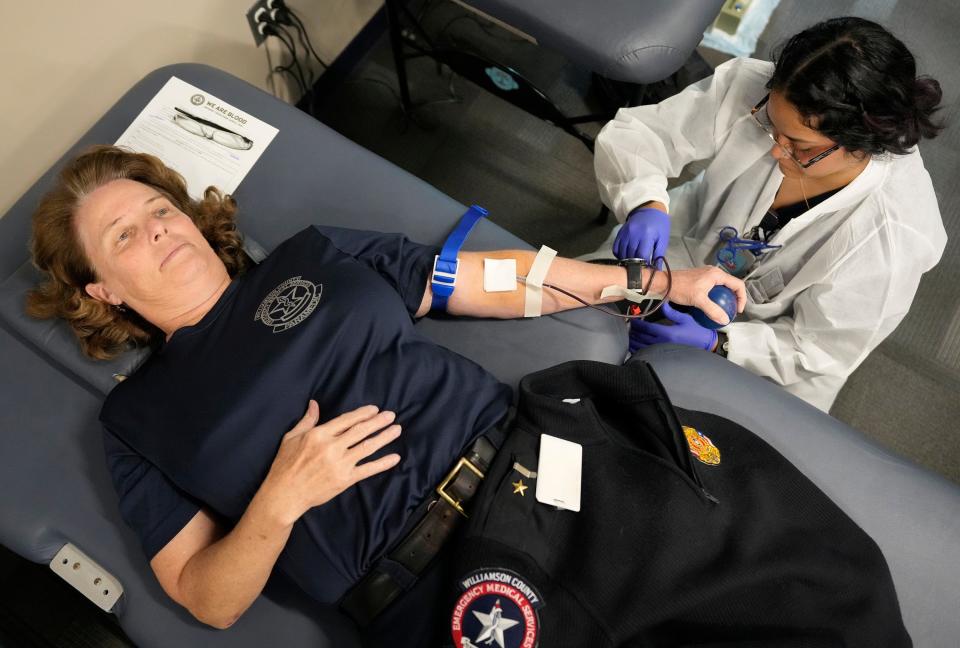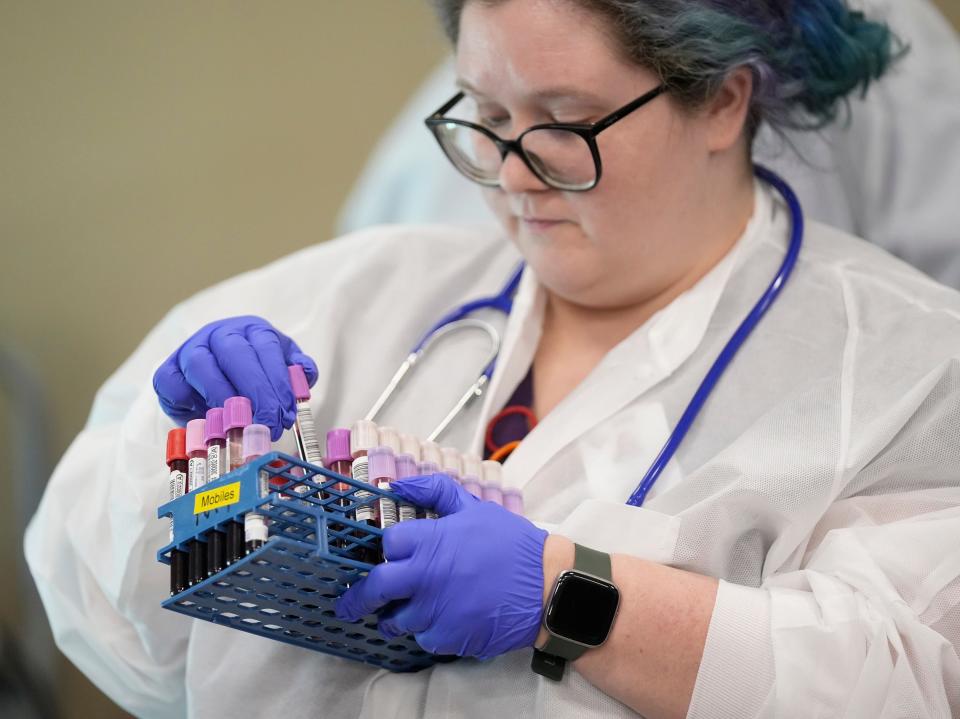How a new partnership lets Williamson County EMS provide blood transfusions at the scene
During a recent car wreck in Liberty Hill, some victims needed blood transfusions immediately. Because of a new program, a Williamson County EMS official said, they were able to get them.
Paramedics could administer transfusions at the scene because command vehicles now carry whole blood units, said Williamson County EMS shift commander Kevin Krienke.
Whole blood is the kind that runs straight from a person's veins and is composed of white cells, red cells and platelets suspended in plasma.
The people in the Liberty Hill wreck were severely injured, Krienke said Wednesday. But he said the blood transfusions quickly provided by EMS "got them to the hospital in better shape."
"People can bleed to death in a few minutes at car wrecks," he said.
Krienke said he could not provide more details about the incident because of privacy regulations.

Williamson County partnered last month with We Are Blood, a nonprofit blood center in Austin, to start a new program that allows the county's three EMS command vehicles to carry blood. Only command vehicles are carrying blood for transfusion because the logistics of transporting it are complicated and providing it is expensive, said Connie Odom, a county spokeswoman.
Command vehicles respond to critical situations including not only car wrecks, but also childbirths in which women might have lost too much blood or medical situations where people might have internal bleeding, Krienke said.
Williamson County paramedics have provided about 10 units of blood at scenes since the program started, officials said.
Command vehicles respond to about 10 calls per day and carry more advanced medical equipment than ambulances, and commanders also manage employees at scenes, officials said.
More: Facing shortages, We Are Blood opens Cedar Park site to expand donation options
"Williamson County needs it (the blood) because it has remote areas and also has traumas and accidents, and people need blood immediately," Krienke said at a blood drive where county employees donated in early January. "Your body has about 5 liters of blood, and if you lose 2 to 3 liters you will die very soon."

The command vehicles had to be equipped with special coolers to ensure the blood remains at the correct temperature, Odom said. The vehicles have devices that monitor the temperature of the cooler and send alerts if it starts to rise to an unacceptable level, she said.
More: Whole blood program saves Cedar Park mom's life
The county spent about $3,000 on the program, said Yvonne Ramirez, another county spokeswoman. The Capital Area Trauma Regional Advisory Council also provided equipment totaling $24,000 to outfit the command trucks and stations, Ramirez said. In addition, each unit of blood costs the county $400, she said. The blood is stored in coolers at the three EMS command stations in Weir, Round Rock and Cedar Park, officials said.
It must be kept at a temperature of 1 to 6 degrees on the ambulances to keep it from spoiling, Krienke said. Once paramedics arrive at a scene, they use a warming machine that takes seconds to heat up the blood for transfusions.
The county is using only O-positive blood for its transfusions. About 80% of the population has a positive blood type and can use O-positive transfusions, said Nick Canedo, a vice president of We Are Blood. He said Austin/Travis County EMS has also partnered with the nonprofit to carry blood to provide at critical scenes.
Canedo said people can donate blood at the center's four locations, including two in Williamson County, if they meet certain requirements, such as being at least 17 years old and weighing at least 115 pounds.
Williamson County paramedic Lt. Davis Winget, one of the county employees who donated blood at the drive in early January, said it was the first time he had ever done it. The process, he said with a smile, was "mostly painless."
"It is such a life-changing thing to be able to give blood, and it truly does save lives," he said. "I have worked here for eight years and been on plenty of accidents and cardiac arrests where no doubt blood (transfusions) would have made a difference."
Where to donate blood
3100 W. Slaughter Lane in Austin
4300 N. Lamar Blvd. in Austin
2132 N. Mays St., Suite 900, in Round Rock
251 N. Bell Blvd., Suite 111A, in Cedar Park
This article originally appeared on Austin American-Statesman: Williamson County EMS can now provide blood transfusions more quickly

